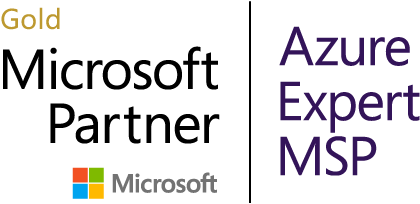
In the US, Health information exchanges (HIEs) enable medical providers to securely share patient records and improve the cost, quality, safety, and speed of patient care. CRISP, the HIE for Maryland, and for West Virginia and DC via partnership, has been collaborating with Microsoft and Leap Orbit to create open-source solutions that other states’ HIEs can leverage and build upon. I recently spoke with David Horrocks, president and CEO of CRISP, to learn more about this ground-breaking initiative. He explained how building open-source infrastructure enables healthcare organizations to leverage limited technology resources for more efficient, accurate, and effective data sharing that drives better patient outcomes — and saves money to keep these HIEs viable. This US-based use case demonstrates benefits that can be unlocked by open-source solutions as healthcare organizations around the world move toward value-based care. Below is an edited and condensed version of our conversation.
Using data for health care solutions
CRISP is a non-profit founded 10 years ago to deploy health IT solutions pursued cooperatively. Our HIE is one such project and is our premier service, and it exists to support value-based care programs. HIEs have the unique ability to improve both care and costs through care-data analytics. This type of reporting and analytics can help public health agencies support better public health and outcomes.
Information is used in two primary stages of care: point of care and care management. Point of care includes doctors and pharmacists, who use the data to understand patients’ prescription drug histories, including whether or not the patient has been prescribed opioids recently.
Trigger points for care managers, who coordinate patient care, occur at admission or discharge. They use the information to track and analyze the most frequent hospital patients and those who have the highest total cost of care.
In a typical week, our system receives 90,000 point-of-care queries by clinicians for imaging results or notes. Information is pushed into electronic health records (EHRs) eight times as often as that – as much as 700,000 times per week for our prescription drug monitoring program (PDMP) and another 700,000 per week for everything else, such as tracking encounters for care managers. For example, that a patient showed up at the ER or was discharged.
Another advancement opportunity is risk-scoring analytics, using the raw data provided by the point-of-care queries. CRISP serves as an enabler to get this vast quantity of data to partners, who will then leverage machine learning in their efforts to apply the analytics to improving health outcomes in the communities they serve.
Application in community health
The foundation of the nation’s privacy model is HIPAA, and it relies on the doctor’s word that the patient has consented. Consent management is a weakness for some HIEs, so we built a cloud-based consent module that allows the patient to indicate consent to share their data, and with whom. We’re hoping others will adopt this technology.
CRISP uses relationship data to flag transactions that don’t make sense. For example, a query from a hospital to which the patient has never been admitted. Our open-source technology stack uses security methods including both automated technological solutions, like two-factor authentication and API throttling of unusual activity, as well as “break-glass processes,” like immediately asking the doctor to attest a second time when a query is flagged.
Developing open source infrastructure and sharing the wealth
We originally had various technology partners who provided core elements of the stack. However, as we started to deliver information in more innovative ways, we needed to adapt. As we began building out our tech stack, we didn’t try to build the whole thing at once. We began with open-stack modules that our peers can use without changing their vendor strategy or making massive changes.
Two years ago, we did not have much of a development capability, which is true of most HIEs. We had to learn agile development processes and to build a development infrastructure. Using the public cloud gives us scalability, better user experience, and faster response times, and it lets us focus on our core competencies. By building cloud-native applications, we don’t need to worry about backup and recovery infrastructure, or database administrators, or the network operations to support storage and switches. We just concentrate on the business needs we are trying to address.
It also gives us speed. Adopting agile and using the cloud enabled us to do standard DevOps at a game-changing pace we never thought would be possible: We can now go from concept to implementation and go-live in just over two weeks. Without that efficiency, we might not have achieved success.
We are pleased that open source lets us share our tools and best practices with other HIEs around the country, most of whom will find themselves in the same situation. Not only do many of the grants we’ve leveraged prioritize reusability for funded projects, but as a core principle, we believe that publishing tools for others to use grows our impact beyond our own region, for the greater public good. Open source creates greater interoperability among HIEs at the local and national levels. As federal HIE-related funds thin, an open-source option will help other regional HIEs as well as other non-traditional health information networks working to serve their communities.
To get started with Azure and predictive analytics, contact the experts at Hanu today for your free consultation.



